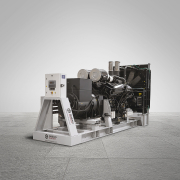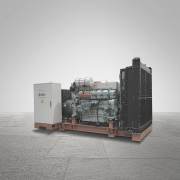
For several years now, one of the biggest challenges in the fight against climate change has been related to the energy safety supply.
Although progress has been made, the energy sector is still the largest emitter of greenhouse gases and further efforts are needed. Also, energy production needs to be renewable and adaptable to already occurring climate conditions. Erratic weather patterns, rising global temperatures and the intensification of extreme weather events challenge the ability of energy systems to provide secure, continuous and affordable supply highlighting this need for adaptation.
Growth in energy demand
Climate change, combined with population growth and economic development, increases energy demand globally. E.g. The use of air conditioning systems in countries with emerging economies and warm climates, where income growth is allowing greater access to cooling technologies. In 2000, the global energy demand for residential air conditioning in summer was 300 TWh, but this is projected to increase to 4,000 TWh by 2050 in regions such as India, Brazil and other developing countries.
As global temperatures rise, these countries will experience longer and hotter summers, which will increase cooling use and thus electricity demand. Although in the more advanced economies and colder climates the need for heating during the winter is likely to decrease, overall energy demand will continue to increase due to the use of air conditioning in the summer months. This change in energy consumption patterns will require a reassessment of global energy strategies, with particular attention to the growing needs of developing countries.
Impact on power generation
Climate change is also affecting power generation. Thermal power plants, which currently produce around 80% of the world’s electricity, are reducing their efficiency due to higher ambient temperatures. Thermal conversion is less efficient in extremely hot conditions. In addition, the availability cooling of water is decreasing forcing them to operate at reduced capacities or even to temporarily halt power production. Thermal plants are designed to operate under more stable climatic conditions and, although most energy transition plans involve the closure of most of these, it must be kept in mind that this process will be gradual. During this transition period, thermal plants will remain a key part of the global energy supply, especially in countries where the infrastructure for renewable energy is not yet fully developed.
Nuclear power plants are particularly vulnerable to extreme weather events, such as hurricanes or storms, which can damage their cooling systems and other critical equipment necessary for the safe operation of reactors. Events such as Hurricane Harvey in 2017, which affected nuclear plants in Texas, highlight the need to strengthen energy infrastructures in the face of such events.
On the other hand, hydroelectric power, which depends on the hydrological cycle, is also at risk. In regions such as the Zambeze River in Africa, hydropower generation capacity is projected to decline by up to 35% by 2050 due to reduced rainfall and rising temperatures. However, in Asia, projections suggest an increase in hydropower capacity, showing that climate change will affect different regions differently.
In addition, renewable energies such as solar and wind are also exposed to the effects of climate change. Increased cloud cover in certain areas will affect the efficiency of solar panels, while more frequent and severe storms could damage both solar and wind installations. Extreme weather events and changes in wind patterns will complicate the integration of these sources into electricity systems, which may require greater investment in energy storage technologies to mitigate their intermittency.

Threats to energy infrastructure
Energy transmission and distribution infrastructures are particularly vulnerable to climate change. Higher temperatures, rising sea levels, melting permafrost, floods and landslides will put energy transmission networks and pipelines at risk. In coastal areas, rising sea levels may damage pipelines and energy facilities, while in permafrost areas, thawing could affect the stability of infrastructure. In addition, heat waves and forest fires that are becoming more frequent also pose a threat to power lines, as has already been seen in countries such as the United States and Australia.
The fossil fuel sector, in particular oil and gas, is also exposed to extreme weather events. Tropical cyclones, such as Hurricane Katrina in 2005, can disrupt operations on offshore extraction platforms and affect onshore infrastructure, leading to disruptions in global energy production and supply. Although the melting of ice in the Arctic presents an opportunity for exploration of new oil and gas reserves – which could increase the global supply of these resources – the exploitation of these reserves would entail new environmental and logistical risks.
The role of generating sets in energy safety
In this context of increasing energy demand and infrastructure vulnerability, gensets emerge as a vital solution to improve energy security. They act as back-up systems that ensure a continuous supply of electricity during outages or interruptions. Particularly useful for critical facilities, such as hospitals, data centres, wind farms and emergency services, which cannot afford interruptions in their power supply.
In addition, gensets are versatile and can be used in a variety of applications, from industrial operations to residential areas, providing an independent power source that can be tailored to the specific needs of each user. In regions where the electrical infrastructure is more vulnerable to disruptions, gensets can provide an effective emergency power solution, ensuring that communities and industries continue to function even during the most severe weather events.
Finally, the deployment of cleaner and more efficient gensets, powered by renewable fuels or clean energy technologies, can contribute to mitigating greenhouse gas emissions, aligning with long-term sustainability goals.
In this sense, gensets not only act as a temporary solution to energy supply insecurity but can also be integrated into a broader climate change adaptation and resilience strategy, offering both energy security and opportunities to move towards a more sustainable future.








































